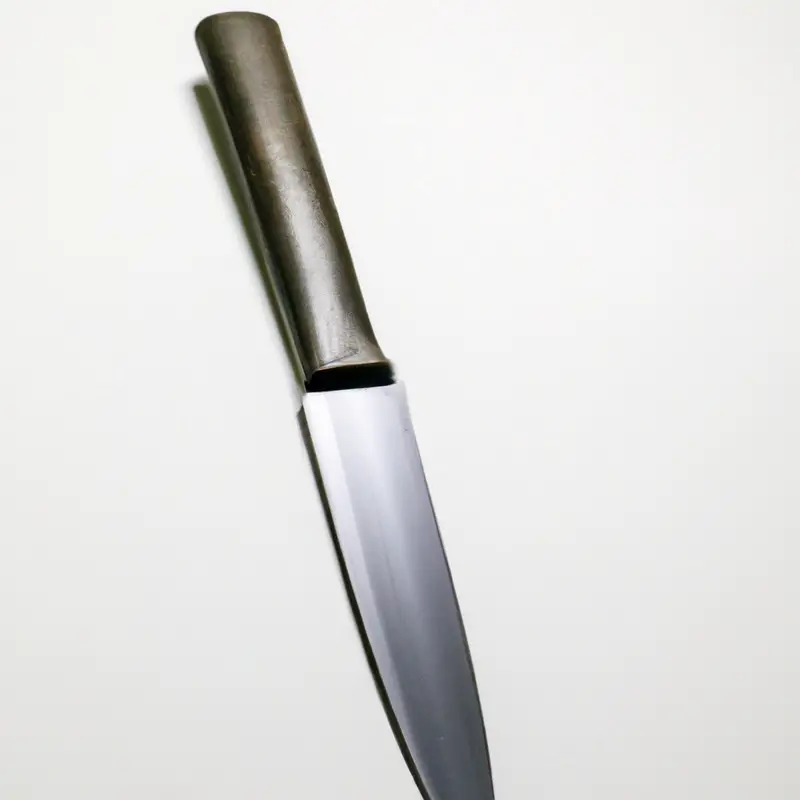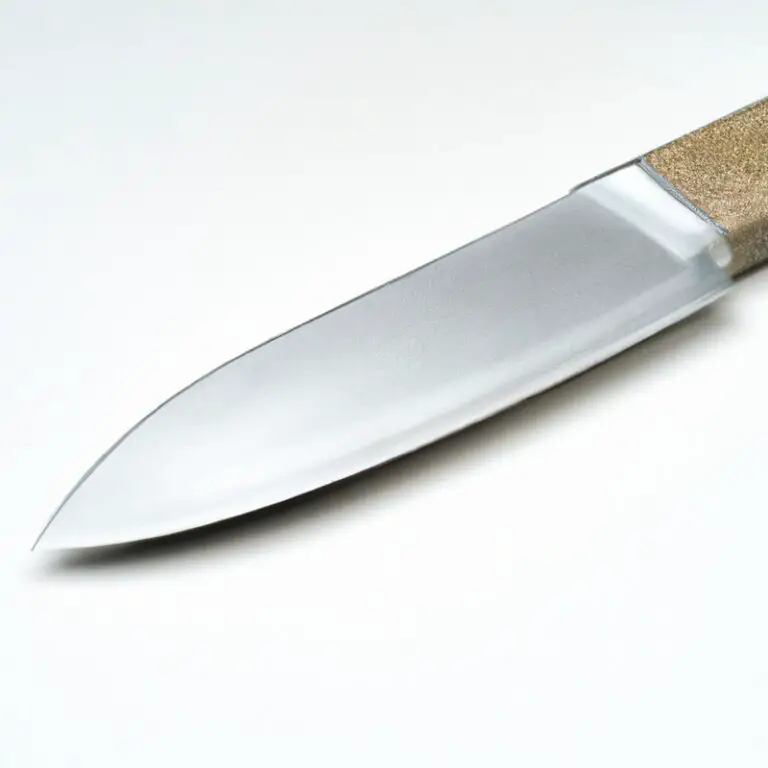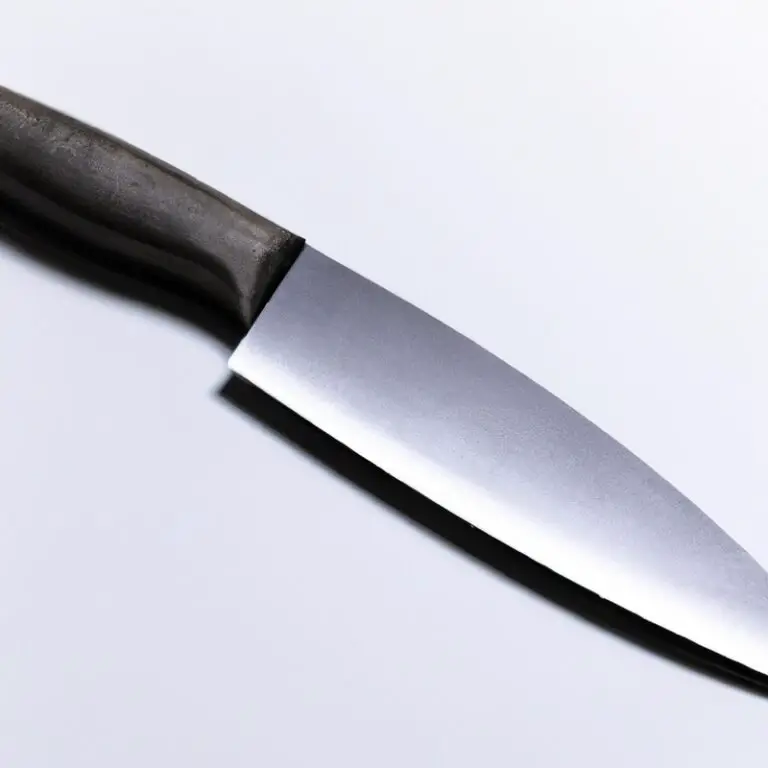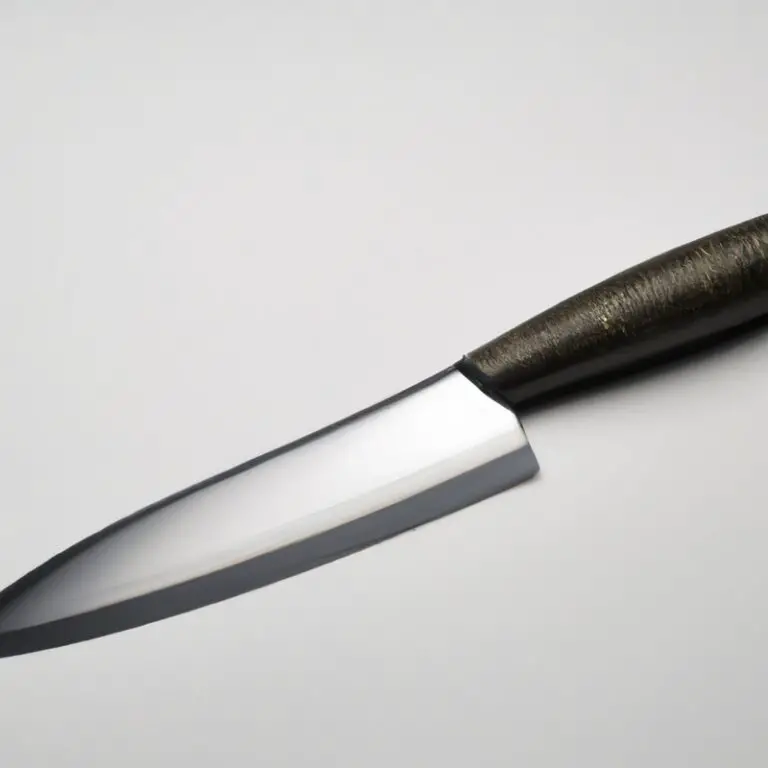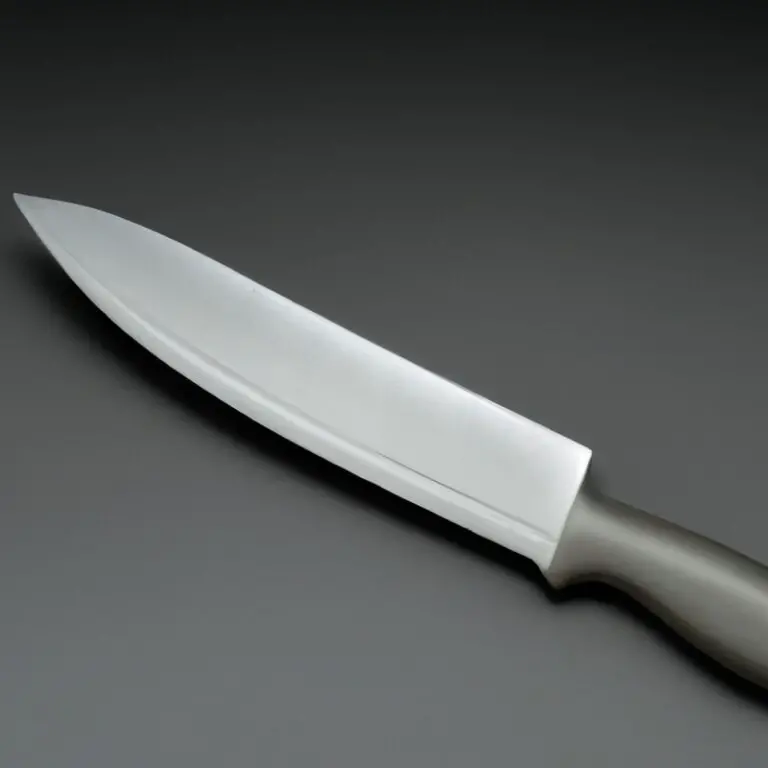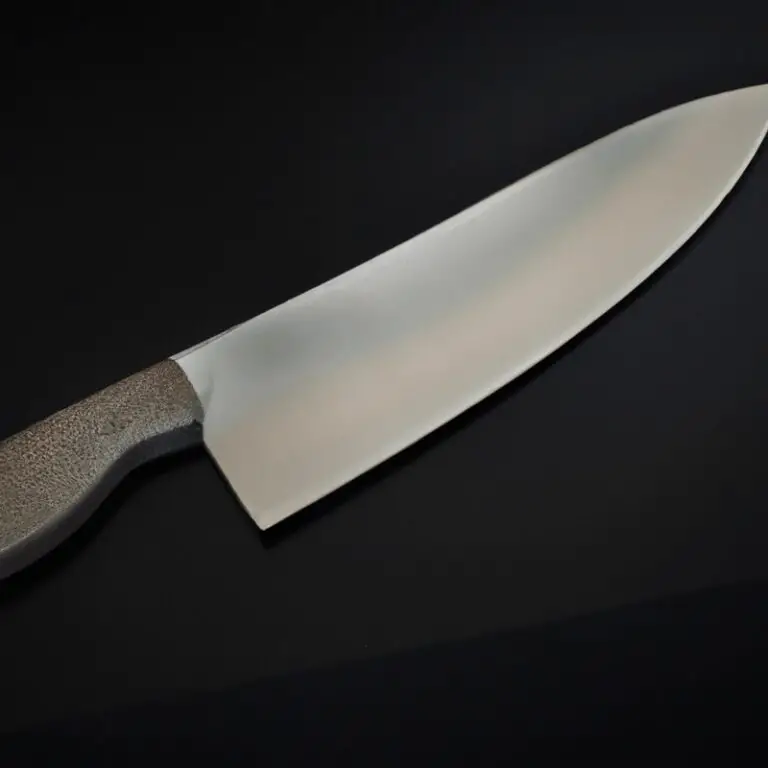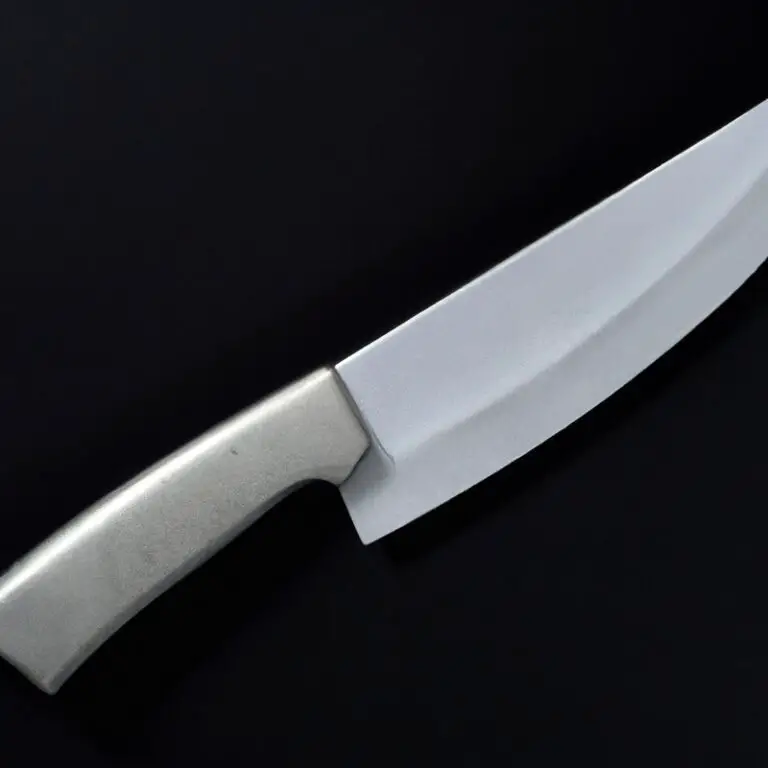What Are The Different Types Of Cutting Boards Suitable For Gyuto Knives? Explained
Key Takeaways:
- Different types of cutting boards have unique characteristics and properties that affect the performance of Gyuto knives.
- Selecting the right cutting board is crucial to preserve the sharpness, quality, and lifespan of Gyuto knives.
- Wood, bamboo, plastic, and composite cutting boards are among the most recommended options for Gyuto knives.
- Consider the hardness, thickness, and maintenance requirements of the cutting board to ensure optimal cutting results with Gyuto knives.
Do you want to make the most out of your Gyuto knife? Choosing the right cutting board is just as important as selecting the right knife.
But with so many options available, it can be overwhelming to decide which one will work best.
In this article, I’ll walk you through the various types of cutting boards suitable for Gyuto knives, including wooden, bamboo, plastic, glass, composite, end-grain, and edge-grain. We’ll also explore the benefits and drawbacks of each option, so you can choose a cutting board that will help your Gyuto knife perform at its best.
| Type of Cutting Board | Material | Pros | Cons |
|---|---|---|---|
| End Grain Wooden Cutting Board | Hardwoods (e.g. maple, cherry, walnut) | Durable and Long-Lasting, Self-Healing Surface, Knife-Friendly, Aesthetically Beautiful, Natural Antimicrobial Properties | High Maintenance, Expensive, Heavy, Requires Frequent Oil Application |
| Bamboo Cutting Board | Bamboo | Renewable Material, Affordable, Knife-Friendly, Lightweight, Easy to Clean | Not as Durable as Hardwoods, May Dull Knives Over Time, Less Resistant to Stains and Odors |
| Plastic Cutting Board | HDPE, PP, PVC, or PE | Dishwasher Safe, Affordable, Lightweight, Non-Porous Surface Resistant to Stains and Odors, Color-Coded Options for Hygiene | Less Durable, May Dull Knives Over Time, Not Environmentally Friendly, Prone to Deep Scarring and Grooves |
| Composite Cutting Board | Mixture of Wood and Plastic Fibers | Durable, Knife-Friendly, Resistant to Stains and Odors, Non-Porous, Easy to Clean | Expensive, May Dull Knives Over Time, May Show Knife Marks, Not as Aesthetically Pleasing as Hardwood Boards |
| Glass Cutting Board | Glass | Hygienic and Non-Porous Surface Resistant to Stains and Odors, Easy to Clean, Aesthetically Pleasing | Extremely Hard Surface That Can Quickly Dull Knives, Slippery Surface Can be Dangerous, Loud and Unpleasant Sound When Cutting |
Understanding the basics: Gyuto knives and their compatibility with various cutting boards
To ensure the longevity and performance of your Gyuto knife, it is essential to choose the right type of cutting board. Among wooden cutting boards, bamboo and end-grain boards are the most suitable for Gyuto knives due to their durability and gentle nature on the blade’s edge.
Plastic and glass cutting boards are not recommended as they can cause damage to the blade.
Composite boards and edge-grain boards are affordable and effective options for Gyuto knives, but they may not last as long as higher-end options. Proper maintenance and care of your cutting board and Gyuto knife are necessary for optimum performance.
Ultimately, the choice of a cutting board depends on personal preference, budget, and sustainability concerns.
Wooden cutting boards: An ideal choice for Gyuto knives and their benefits
Wooden cutting boards are an ideal choice for Gyuto knives due to a number of benefits. Firstly, wooden boards are gentle on knife blades, which helps to maintain a sharp edge and prolong the life of the knife.
Wood also has natural antimicrobial properties, making it a hygienic option for food preparation.
Additionally, wooden boards are sturdy and durable, providing a stable surface for chopping and cutting. They are also aesthetically pleasing and can add a warm, natural touch to any kitchen.
However, it’s important to note that wooden boards require regular maintenance to prevent warping and prevent bacteria buildup.
Overall, wooden cutting boards are a reliable and timeless choice for Gyuto knives.
Bamboo cutting boards: A sustainable and durable option for Gyuto knives
Bamboo cutting boards are a sustainable and durable option for Gyuto knives. Bamboo is a highly renewable and eco-friendly material that grows faster than hardwood trees.
It also has natural antimicrobial properties that make it resistant to bacteria and odors.
Bamboo cutting boards are gentle on the Gyuto knife’s blade, preventing dulling and chipping. Plus, they are easy to clean and maintain, making them a convenient option for everyday use.
Just make sure to look for high-quality bamboo cutting boards to ensure durability and longevity.
Overall, bamboo cutting boards are a great option for those looking for a sustainable, long-lasting, and knife-friendly cutting surface for their Gyuto knives.
Plastic cutting boards: Lightweight and easy to clean, but are they suitable for Gyuto knives?
Plastic cutting boards are lightweight, inexpensive, and easy to clean, making them a popular choice for many home cooks. However, they are not ideal for use with Gyuto knives.
Plastic cutting boards are hard and lack the necessary give to prevent dulling the blade of a Gyuto knife.
They may also harbor bacteria in scratches and grooves that develop over time. While they may be suitable for other types of knives, it is best to avoid plastic cutting boards when using a Gyuto knife.
For optimal performance and longevity, it is recommended to use a wood, bamboo, or composite cutting board with a Gyuto knife.
Glass cutting boards: Are they too hard for Gyuto knives or a suitable option?
Glass cutting boards are not suitable for Gyuto knives. This is because glass is too hard, causing the edge of the knife to blunt faster than other materials.
Additionally, the hard surface of the glass can cause your Gyuto knife to chip or even break, disrupting your kitchen experience.
It is best to avoid using glass cutting boards and opt for other materials like wooden, bamboo, composite, or edge-grain cutting boards that are easier on your knife’s edge.
Composite cutting boards: How they compare with other types of cutting boards for Gyuto knives
Composite cutting boards are made by combining multiple materials into one board, usually a blend of wood fibers and resin. In terms of their suitability for Gyuto knives, composite cutting boards are relatively gentle on the knife’s blade, similar to wooden cutting boards.
However, they are more durable and easier to clean than wooden cutting boards, making them a practical choice for many home cooks.
They also don’t harbor bacteria as easily as some other materials, such as plastic cutting boards. However, composite cutting boards are harder than wood-based boards, which can cause dulling of the knife over time.
Additionally, some composite boards might be harder or softer than others, so it’s important to research the specific board’s hardness before purchasing.
Ultimately, composite cutting boards are a popular choice for many home cooks looking for a durable and practical option that is still gentle on their Gyuto knife.
End-grain cutting boards: A popular choice among professional chefs for Gyuto knives, but why?
End-grain cutting boards are popular among professional chefs for their durability and ability to prevent knife dulling. The design of these boards allows the knife to cut through the wood fibers rather than against them, which not only protects the blade but also makes the board more resistant to scratches and marks.
The end-grain also absorbs the impact of the knife’s blade, making it less prone to damage.
Additionally, end-grain cutting boards are highly moisture-resistant, which further adds to their longevity. These boards are typically made of hardwoods such as maple, walnut, and cherry.
While they may be pricier than other types of cutting boards, their durability and longevity make them a smart investment for both professional chefs and home cooks who frequently use Gyuto knives.
Edge-grain cutting boards: An affordable option for Gyuto knives, but are they worth it?
Edge-grain cutting boards are a popular choice for those looking for an affordable option for their Gyuto knives. They are made by gluing together long pieces of wood, creating a surface that is both sturdy and durable.
While they may not be as long-lasting as end-grain cutting boards, they are easier to maintain and generally more budget-friendly.
One thing to consider when choosing an edge-grain cutting board for your Gyuto knife is that they may not be as forgiving on the blade as end-grain boards. With that being said, they are still a great option for everyday use and can provide excellent results when cared for properly.
In summary, if you are on a budget and looking for a reliable cutting board for your Gyuto knife, an edge-grain board is definitely worth considering.
Just be sure to maintain it properly and use caution when cutting in order to keep your knife in top condition.
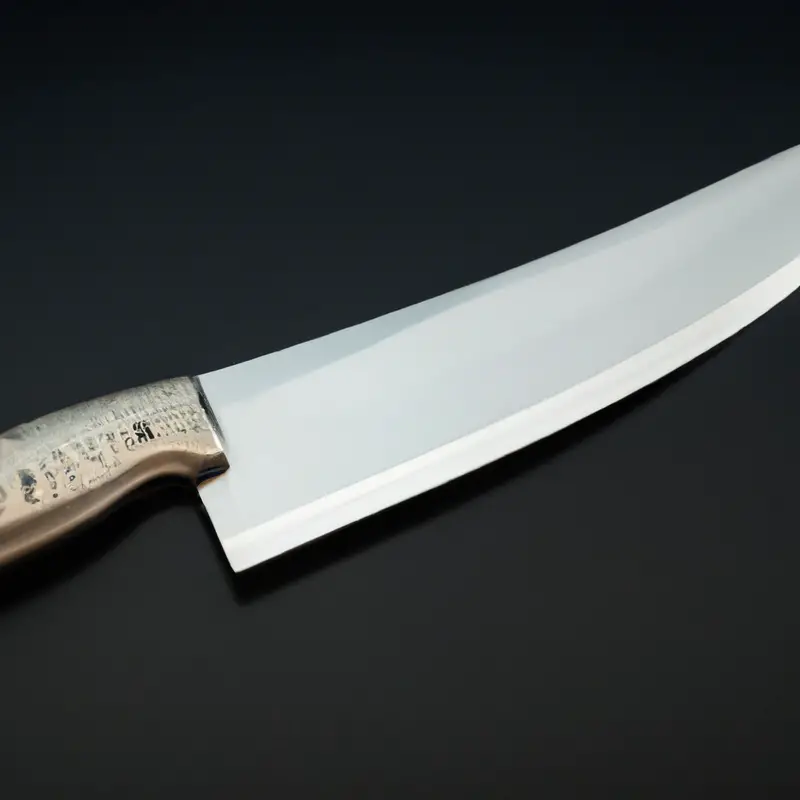
Maintenance and care tips: How to ensure the longevity of your cutting board and Gyuto knife
To ensure the longevity of your cutting board and Gyuto knife, it is essential to follow specific maintenance and care tips. Firstly, always hand wash your cutting board after use and avoid putting it in the dishwasher.
Use warm, soapy water and a sponge or soft brush to clean the board thoroughly.
Secondly, dry the cutting board entirely before storing it to avoid warping or cracking due to moisture. Additionally, use a food-safe oil, like mineral oil, to condition your cutting board regularly, which will protect it from cracks and stains.
For the Gyuto knife, avoid cutting hard surfaces like bones, frozen food, or hard fruit as these can dull the blade quickly.
Instead, use only cutting boards or surfaces suitable for Gyuto knives. After use, wipe the blade dry and store it in a protective sheath or knife block that will prevent it from getting damaged or dulled.
Following these maintenance and care tips will ensure the longevity of both your cutting board and Gyuto knife and save you time and money in the long run.
Choosing the best cutting board for your Gyuto knife: Factors to consider and tips for making the right decision
When it comes to choosing the best cutting board for your Gyuto knife, there are several factors to consider. Firstly, you should look for a cutting board made from a material that won’t dull or damage the knife blade.
Wooden cutting boards, especially those made from hard woods like maple or teak, are an ideal choice as they are gentle on knife blades.
Bamboo cutting boards are also a sustainable and durable option for Gyuto knives. On the other hand, plastic cutting boards are lightweight and easy to clean but may not be suitable for Gyuto knives as they can quickly dull the blade.
Glass cutting boards are too hard for Gyuto knives, leading to excessive wear and tear.
Composite cutting boards can be a suitable option, but their durability and compatibility with Gyuto knives depend on the specific material and construction. When making a decision, it’s essential to consider factors such as durability, ease of maintenance and care, and cost.
In addition, it’s crucial to regularly maintain and care for your cutting board and Gyuto knife to ensure longevity and performance.
Ultimately, the best cutting board for your Gyuto knife will depend on your personal preferences and needs.
Alternatives to traditional cutting boards: Other surfaces that can be used for Gyuto knives
Aside from traditional cutting boards made of wood, bamboo, plastic, glass, and composite materials, there are also other surfaces that can be used for Gyuto knives. These include ceramic tiles, granite or marble countertops, and even large flat river stones.
However, it is essential to keep in mind that using these alternative surfaces may require a bit more caution and care as they may be harder and less forgiving to the blade.
Additionally, these alternative surfaces may also have varying levels of durability, hygiene, and compatibility with different types of food. Ultimately, it is vital to ensure that the alternative surface you choose is suitable and safe to use for your specific Gyuto knife and cutting needs.
The importance of a properly matched cutting board for the longevity of your Gyuto knife
Using the right cutting board is essential to the longevity of your Gyuto knife. Using the wrong surface can damage or dull the blade, which can lead to costly repairs or replacements.
A properly matched cutting board that is made of the right material will help maintain the sharpness of your knife and prolong its lifespan.
Additionally, cutting on the correct surface will enable you to cut more safely and efficiently. Therefore, it is crucial to choose the right cutting board for your Gyuto knife to optimize its performance and longevity.
How the material and quality of your cutting board can impact the performance of your Gyuto knife
The material and quality of your cutting board can greatly impact the performance and longevity of your Gyuto knife. Using a hard and unforgiving surface, such as glass, can damage and dull the blade quickly.
Plastic cutting boards can create micro-scratches on the blade over time, leading to a shorter lifespan.
In contrast, wooden cutting boards, particularly those made from end-grain construction, are gentle on the blade and can even help to maintain its sharpness. Bamboo cutting boards are also a good choice as they are durable and sustainable, but make sure to select high-quality ones to avoid warping or cracking.
Ultimately, choosing the right cutting board can ensure the best performance and longevity for your Gyuto knife.
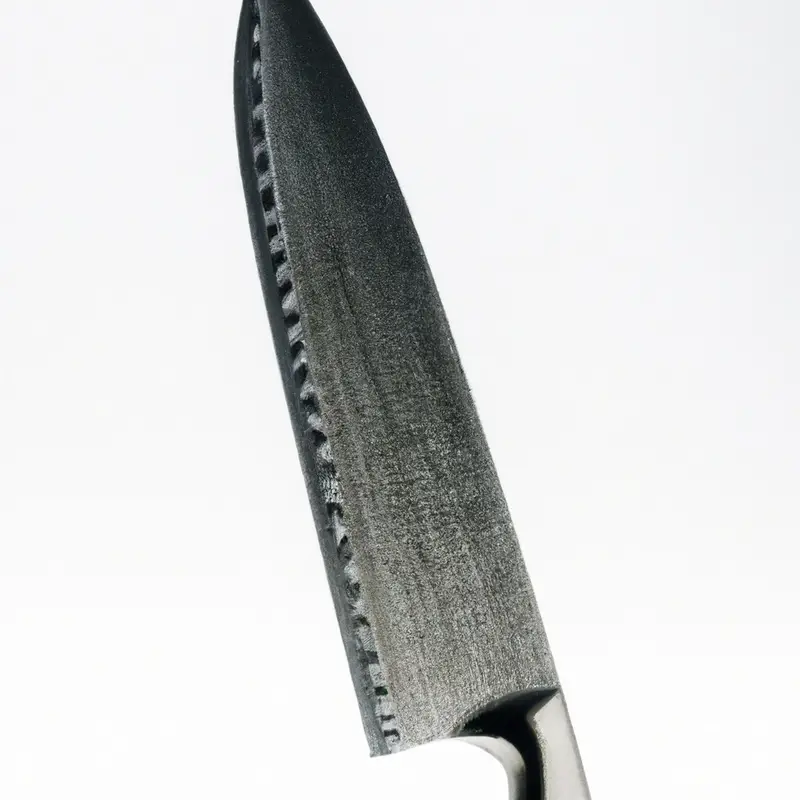
DIY versus store-bought cutting boards for your Gyuto knife: Pros and cons of each option
DIY cutting boards can be a good option for those who enjoy woodworking and want to save money. However, they may not be as durable or hygienic as store-bought cutting boards.
Store-bought cutting boards typically have smoother surfaces, are easier to clean, and come in a variety of materials to choose from.
Additionally, store-bought cutting boards are often designed with a specific purpose in mind, such as meat or vegetables. With DIY cutting boards, there is also the risk of using inappropriate materials, such as untreated wood, which can harbor bacteria and cause contamination.
Overall, while DIY cutting boards can be a fun and cost-effective project, store-bought cutting boards are a safer and more reliable option for use with your Gyuto knife.
Longevity and sustainability: Choosing a cutting board that is better for your Gyuto knife and for the environment
When choosing a cutting board for your Gyuto knife, it’s important to consider its longevity and sustainability. Wooden cutting boards, specifically those made from hardwoods like maple and walnut, are a great option as they are durable and long-lasting.
Bamboo cutting boards are also sustainable and can last a long time.
Plastic cutting boards are lightweight and easy to clean, but they are not as environmentally friendly and can dull your knife over time. Glass cutting boards are too hard for Gyuto knives and can cause damage.
Composite cutting boards can be durable, but they often contain plastic and are not sustainable.
Whatever cutting board you choose, make sure to properly maintain and care for it to ensure its longevity and avoid waste.
Best practices for cutting and chopping with a Gyuto knife on different types of cutting boards
When using a Gyuto knife on different types of cutting boards, there are some best practices to follow to ensure safety and longevity of your knife and board:
- Use a wooden cutting board: Wooden cutting boards are the best option for Gyuto knives as they are gentle on the blade and won’t dull it quickly.
- Avoid glass cutting boards: Glass cutting boards are too hard for Gyuto knives and can cause damage to the blade.
- Use separate cutting boards for different foods: To prevent cross-contamination and reduce the risk of foodborne illnesses, use different cutting boards for meat, vegetables, and fruits.
- Maintain and sanitize your cutting board regularly: Clean your cutting board after every use with hot soapy water and vinegar. Sanitize it using a diluted bleach solution.
By following these best practices, you can ensure that your Gyuto knife and cutting board will last longer while providing a safer and more efficient cutting experience.
Heritage and tradition: Using specific types of cutting boards that are locally or culturally significant with Gyuto knives
Many cultures have their specific cutting board traditions that go back centuries. For instance, in Japan, the Hinoki wooden cutting board is a culturally significant cutting board.
It is made from Hinoki Cypress, a wood that has natural oils that do not absorb bacteria, making it ideal for cutting and preparing raw fish, which is a staple in Japanese cuisine.
Traditional Japanese Gyuto knives also pair well with the Hinoki cutting board as the knife blade can glide smoothly on the soft surface, reducing the chances of it becoming dull. In summary, using culturally significant cutting boards is not only a way of preserving heritage but can also improve the performance of your Gyuto knife.
Using multiple cutting boards for different tasks: An efficient and effective way to maintain your Gyuto knife
Using multiple cutting boards for different tasks can be a simple yet effective way to maintain the quality and sharpness of your Gyuto knife. By assigning different cutting boards for specific tasks, such as one for meats and another for fruits and vegetables, you can reduce the risk of cross-contamination and prevent unnecessary wear and tear on your knife’s blade.
It also allows you to choose the best cutting board material for each task.
For example, a wooden board may be best for slicing raw meats, while a plastic board may be better for cutting acidic fruits. So, consider investing in multiple cutting boards and assign each board for a specific task to prolong the life of your Gyuto knife.
The debate over which cutting board is most suitable for Gyuto knives: Different perspectives and opinions
The debate over which cutting board is most suitable for Gyuto knives is ongoing and has no clear winner. Some experts argue that wooden cutting boards are the best choice, citing their durability and forgiving surface that protects the blade’s edge.
Others prefer plastic cutting boards, which are lighter and easier to clean but pose a risk of dulling the blade over time.
Glass cutting boards are too hard for Gyuto knives and can chip or break the blade. Bamboo cutting boards are a sustainable and environmentally friendly option, but they are not as durable as wooden boards.
End-grain cutting boards are the preferred choice for many professional chefs, as they are better at withstanding the constant wear and tear of chopping and slicing.
Ultimately, the best cutting board for a Gyuto knife is a matter of personal preference and how well it absorbs the impact of the blade while also keeping the edge sharp.
Experimenting with different cutting boards for your Gyuto knife: Exploring different options and finding your personal preference
Experimenting with different cutting boards for your Gyuto knife is important to find your personal preference. Different types of cutting boards offer various benefits and drawbacks.
Wooden cutting boards are an excellent choice for Gyuto knives as they are gentle on the edges and have antimicrobial properties.
Bamboo cutting boards are a sustainable and durable option. Plastic cutting boards are lightweight and easy to clean but may not be suitable for Gyuto knives as they may be too hard on the edge.
Glass cutting boards are not recommended as they are too hard and can damage the knife’s edge.
Composite, end-grain, and edge-grain cutting boards are other options to consider. It’s crucial to maintain and care for your cutting board and Gyuto knife regularly.
Remember to consider the material, quality, and sustainability of the cutting board when making a decision.
Ultimately, finding your personal preference takes some experimentation, so don’t be afraid to try out different options and see what works best for you.
Final Verdict
Choosing the right cutting board for your Gyuto knife can make all the difference in its performance and longevity. Whether you opt for a wooden, bamboo, plastic, glass or composite board, each has its own unique advantages and disadvantages.
Selecting a cutting board that matches your needs and preferences is essential, but you should also consider the maintenance and care needed to ensure its longevity.
By experimenting with different boards, you can find the one that best suits your cutting style and preferences. Ultimately, a properly matched cutting board can enhance the performance of your Gyuto knife and improve your culinary experience.
Trust in your expertise and make an informed decision that is best for both your knife and your cooking skills.

